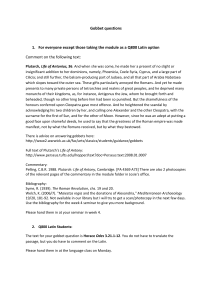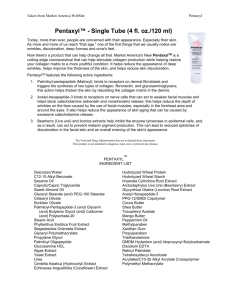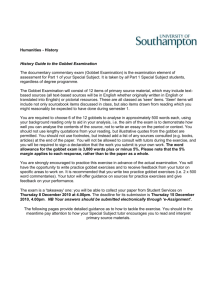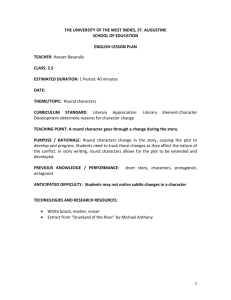Answering gobbet questions
advertisement
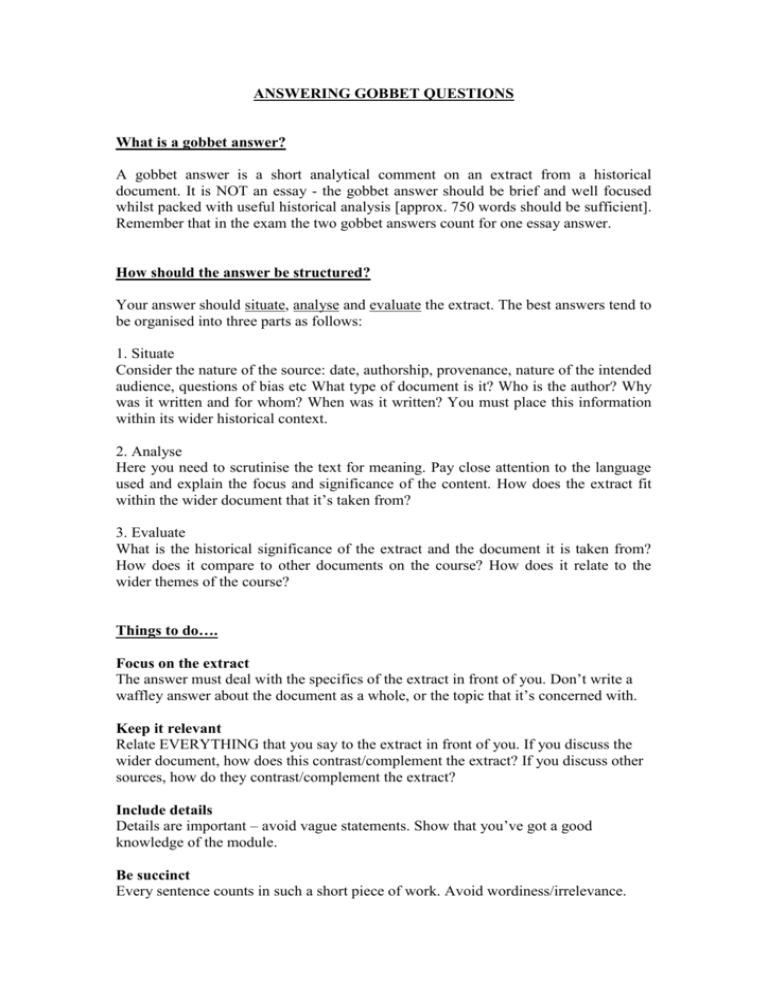
ANSWERING GOBBET QUESTIONS What is a gobbet answer? A gobbet answer is a short analytical comment on an extract from a historical document. It is NOT an essay - the gobbet answer should be brief and well focused whilst packed with useful historical analysis [approx. 750 words should be sufficient]. Remember that in the exam the two gobbet answers count for one essay answer. How should the answer be structured? Your answer should situate, analyse and evaluate the extract. The best answers tend to be organised into three parts as follows: 1. Situate Consider the nature of the source: date, authorship, provenance, nature of the intended audience, questions of bias etc What type of document is it? Who is the author? Why was it written and for whom? When was it written? You must place this information within its wider historical context. 2. Analyse Here you need to scrutinise the text for meaning. Pay close attention to the language used and explain the focus and significance of the content. How does the extract fit within the wider document that it’s taken from? 3. Evaluate What is the historical significance of the extract and the document it is taken from? How does it compare to other documents on the course? How does it relate to the wider themes of the course? Things to do…. Focus on the extract The answer must deal with the specifics of the extract in front of you. Don’t write a waffley answer about the document as a whole, or the topic that it’s concerned with. Keep it relevant Relate EVERYTHING that you say to the extract in front of you. If you discuss the wider document, how does this contrast/complement the extract? If you discuss other sources, how do they contrast/complement the extract? Include details Details are important – avoid vague statements. Show that you’ve got a good knowledge of the module. Be succinct Every sentence counts in such a short piece of work. Avoid wordiness/irrelevance. Know your sources! The weakest answers misunderstand the nature of the gobbet, or – at worst – entirely mistake their contents. If you’re not absolutely sure to what the gobbet refers then choose another one. Things to avoid…. Formulaic answers It may be that you need to think about issues of reliability but don’t assess ‘reliability’ in a formulaic way. Get out of the A-level mindset. Similarly when thinking about limitations of the source, don’t churn out formulaic answers. For example: ‘This source is limited because it doesn’t tell us about XYZ…’ Of course it doesn’t – it’s only two sentences! But what do you know about XYZ that might illuminate the extract further? ‘This source is limited on its own; the historian also needs to look at other sources to get a fuller picture.’ Of course the historian should look at more sources – and you’ll have looked at dozens on your module – so do so. Don’t paraphrase the source …or quote extensively. A maximum of two or three words may sometimes be quoted if they’re important to what you’re saying, or if you think it’s necessary to specifiy which part of the extract that you’re discussing. Don’t hypothesize ‘It may affect this…’ did it? ‘This might have resulted…’ did it? Don’t look at the extract in isolation A gobbet exam isn’t an exercise in comprehension. Think about everything you know about the course – themes, other documents, specific details, key events, people. You’re aiming to make an informed answer in the light of everything you know about the course as a whole.

